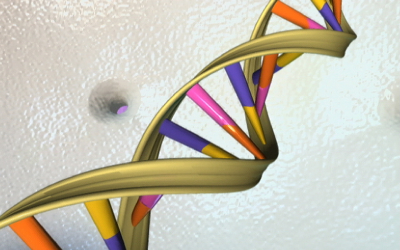We hear from the researchers who are working to translate neuroscience discoveries into ground-breaking new diagnostics and therapies for people living with dementia and other neurological conditions.
Prof Helene Plun Favreau and her group are working on mitochondrial dysfunction, in particular mitophagy dysfunction, in Parkinson's disease and in other neurodegenerative conditions. She tells us about her work.
What is your area of research?
Cells get their energy from mitochondria - the so called "power houses" of the cell. If mitochondria become damaged, it is important that the cell is able to break down the dysfunctional mitochondria and remove them from the cell so that they do not become harmful - a process known as mitophagy.
My lab is working on mitochondrial dysfunction, in particular mitophagy dysfunction, in Parkinson's disease and in other neurodegenerative conditions.
What does translation mean to you in your work?
My work sits at a very early stage in the translational chain. I collaborate closely with many other labs, whose work is much later in the chain. When we’re at Grays Inn Road, having all these groups, at different stages of this chain, under the same roof will make a huge difference, I believe.
I am a fundamental biologist by training, so I like to understand mechanisms. When we find a new gene associated with disease, I’ll always look at what is known about the function of the gene, and how it could help us understanding the mechanism (mitophagy in our case) that is dysfunctional in disease. – finding a new gene is like finding a new piece in the jigsaw. Once we identified the genes and we understand how, when dysfunctional, they interfere with the mechanism, we can look for ways to target these genes to regulate the mitophagy process in the disease.
In recent projects, we have been doing a lot of genetic screening, collaborating with the Alzheimer’s Research UK UCL Drug Discovery Institute (UDDI). In our latest screen, we are silencing candidate risk genes for Parkinson’s disease (~ 500 genes) using siRNA and neuroblastoma cell lines. We are working in collaboration with GSK, who are working on similar screenings using CRISPR technology and using induced pluripotent stem cells-derived dopaminergic neurons – the neurons that are specifically dying in Parkinson's.
How are you working with industry?
On top of the GSK collaboration, I have worked on a number of collaborations with industry looking at optimising screens, whether it's genetic or compound, for mitophagy to try to find either new genes for Parkinson's, or identify compounds that improve the mitophagy process.
As part of the UCL and Eisai Therapeutic Innovation Group (TIG), we have just started a project to try to identify small molecules that may be able to enhance mitophagy and improve neuronal health in human dopaminergic neurons. I have been part of the TIG science advisory board for many years, but I am excited to be directly working with them on a project for the first time, with two TIG scientists in my lab.

How will Grays Inn Road change the way you work?
I already collaborate closely with many different departments, so Grays Inn Road can only facilitate my research further. For example, I work closely with Prof Selina Wray and with the UDDI for my stem cell work and my genetic screens, respectively. We are all based on different sites at UCL and I believe that having a closer proximity to all my collaborators will make a big difference. I’m a biologist by training, but I do work very closely with a number of clinicians around the Square. The Grays Inn Road building will give me great opportunities to foster new collaborations and extend my collaborative network.
 Close
Close

